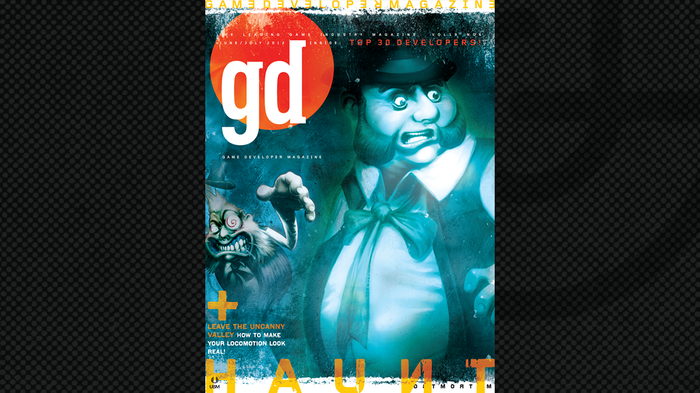BizDev Diaries: Managing 150+ Meetings for Twelve Companies Without Losing My Mind (Part 3 of 3)
The final post in our series looking back at GDC and how we arranged and managed meetings for a set of clients with a wide variety of needs and services.

Jay realized he wasn't going to be the best "employee" after leading his first start up for three years so he decided to do it again. He founded The Powell Group in 2010 and the team has grown steadily ever since. He's been building relationships and negotiating contracts in the game industry for 17 years and if it pertains to expanding business networks, or promoting games and projects, his team can probably help you at www.powellgroupconsulting.com
Previously (here) and (here) we discussed the months of work that led up to GDC and how we helped define the goals and objectives for all twelve companies we oversaw at GDC. We're going to tackle the show itself today but feel free to look back and catch up.
Key Takeaways (or the TLDR version)
Triage your meetings to make sure you have time for the most important people on your list.
Ensure you have a physical copy of your schedule and the contact details for the people you are meeting.
Be prepared for it all to go to hell. Have a back up plan and be ready to reschedule meetings.
February 23, 2015 (7 days to GDC... CRUNCHTIME!)
Seven days out, and a mad rush is going on in the offices to finalize meetings, locations, account for travel time, and ensure everyone understands the actual time of the meeting. One of the ongoing issues we see at every show we attend is fact that people have a tendency to not look at the time zone of the scheduled meeting. We always book our meetings for shows in the local time zone of the event. This inevitably leads to a series of "Why am I meeting someone at 6:00 AM?" and "I told you I wasn't going to be available at 4:00 and you still booked a meeting for me at that time!" These emails and calls are frequently angry and it all stems from a simple misread. We've tried multiple solutions to this problem and it never seems to get better. You just have to remind your clients that the times are scheduled in the appropriate time zone and when they arrive at the show their schedule will look fine.
... and we'll address that concern repeatedly over the next week.
When we plan a show for ourselves or a client we always triage their meeting targets. There are three tiers:
Tier 1 - a meeting or introduction that is absolutely a top priority. These are the meetings to be targeted first and if one of these meetings needs to be moved it will take precedence over a meeting in the same time slot from a lower-tier target
Tier 2 - a meeting that is instrumental to the core business of the client. All of these meetings should be booked if at all possible but they are not as key as the Tier 1 list
Tier 3 - still a quality meeting, but it is of less importance. These targets may be centered around long-term company objectives or exploratory in nature.
The week before the show is when we reach out to the tier 3 targets. We're still gently reminding the tier 1 and tier 2 targets that we have clients that would like to meet with them but we begin to do outreach to these companies as well. It's important to keep in mind that a tier 3 target for one client may be a tier 1 target. It is yet another variable that needs to be addressed as we schedule these meetings.
On the Friday evening before the show we have a hard stop to address. We build briefing books for each client that is personalized for their show, outlining not only the schedule but a bit about each company, accompanied by a photo and a short bio on the person attending the meeting. It also goes into detail about the area, from where you can get aspirin to where the closest dry cleaner or office store is located. To complete these we use Friday night's meeting schedules as the basis for this. The books need to be created, proofread, saved, and printed. We send a digital version to our clients on Sunday night so they have it to review it on the flight. We also send them off for printing so each client will have a hard copy at the show. Any meetings booked after Friday night will still happen, but the meeting summaries for each of these will only be delivered digitally.
Showtime!
Yes, the hard part is over, but the fun is just beginning. In the weeks leading up to the show we had seven members of our team engaged in helping plan this show. Now that we're at the show we've trimmed that down to three of us "on the ground" and one dedicated member in the office managing new requests, reschedules, and all the other little things that can pop up. While I'm either in meetings or doing introductions on the fly at the show, the two other members of my team are running up and down the halls where our meetings take place making sure all the meetings start and end on time. While no-shows do happen, they are rare for our clients. In 2014 we only had one meeting not happen and that was due to our client, not the publisher. When you schedule meetings that are "quality" and beneficial to both parties you will have little problem making sure they happen. Still, if you are five minutes late (either client or partner), you will receive a text or call from our team gently reminding you about the meeting and getting an ETA. Everyone's time is valuable at a conference and we respect that. If a partner establishes a tendency to not show up on time or at all that is noted by the team and taken into account at subsequent shows.
Tuesday, the day of the dinner, is our final chance to verify attendance and get an accurate headcount. Events like this at a conference are the most stressful and hardest to plan for since all manner of things can happen once you're at the show. New priorities appear, meetings go late, new meetings pop up, people discover awesome parties. Still, the afternoon of the dinner is when we sit down as a team and build the seating chart. We design this around the opportunities between our clients and the attendees and it has generally worked out well. It's something that has to be modified up to the very last moment and you'll frequently see the team stepping outside to call, email, or text guests. We do all we can to make sure things go well; to date we've delivered on that.
Summary
By the end of the conference we had scheduled and managed over 150 meetings. This doesn't take into account the relationships that our team set up between our clients and the companies that wanted to meet with them but were either unable to do so at the show or not at the show at all. It isn't always about publishers and closing the deal; some deals in this industry take years to develop and you have to start that relationship somewhere.
Having said that, the end of the show is not the end of the work for anyone. Now follow ups need to be done, promises made in meetings need to be kept, and all of these new relationships (and old) must be kindled. I wish you the best of luck with all the opportunities you encountered at the show. For my team, it's on to Sandbox Summit, The Licensing Show, GamesCon, and Casual Connect, where we'll do it all again.
About the Author
You May Also Like









